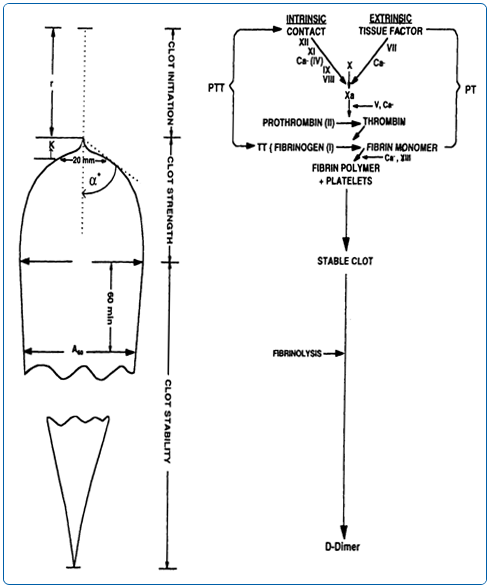Although the problem, interpretation and assessment of the many possible coagulation events that occur in blood is yet not fully uncovered nor their reasons fully understood, measuring the behaviour of clotting blood by thromboelastography is still an excellent complement to the biochemical analysis, done routinely in laboratories.
The difference being that a lab test provides single measurements of the contents of blood that are static, indicating the quantity of what is in the blood, while the TEM-A provides a measurement of the mechanical behaviour of blood during the dynamics of its clotting process i.e. the quality that those quantities produce when they are interacting. Therefore, since it does not provide any of the quantitative analysis necessary to study congenital coagulation defects, the TEM-A is an instrument indicated to support clinical decisions that relate mainly to acute coagulation disorders, as found in Operating Rooms, Intensive Cares, or, as originated by invasive procedures and/or pharmacological therapies, and/or by natural events such as delivery, that may cause acute/temporary coagulation imbalance And although the response of the TEM-A thromboelastography on the same blood may slightly vary, depending on the individual’s general status, reccommending a routine thromboelastogram taken in good health conditions, may be an insurance for the person in case of need to submit to therapies altering its coagulation status (for instance, it provides the picture of the native haemostasis in case of antiaggregant administration, thus allowing to measure the effect of the antiaggregant reduction.
A thrombolastography test taken when pregnancy is announced, and periodically during pregnancy, may contribute to minimise haemostasis problems at a later date). Failing that, thromboelastography will confirm or deny a coagulation problem, and indicate possible causes, every time a patient is at risk of one, has one, or it is needed to prevent one.

